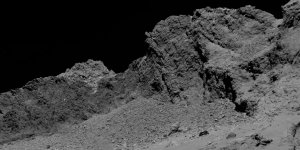| News / Science News |
Scientists discover fossil of dinosaur ancestor with surprising croc-like appearance
Scientists have long wondered what the earliest dinosaur relatives looked like. Most assumed they would resemble miniature dinosaurs, about the size of chickens, and walk on two legs.

A reconstruction of T. rhadinus feasting on a relative of early mammals. ![]()
The discovery of Teleocrater rhadinus, however, has forced scientists to reassess their ideas. Based on a fossil unearthed in southern Tanzania, these early relatives were carnivorous animals that measured approximately 7-10 feet long, with long necks and tails. Rather than walking on two legs, they walked on four crocodilian-like legs.
T. rhadinus predated dinosaurs, living more than 245 million years ago during the Triassic Period. It shows up in the fossil record right after a large group of reptiles known as archosaurs split into a bird branch (leading to dinosaurs and eventually birds) and a crocodile branch (leading to alligators and crocodiles). T. rhadinus and its kin are the earliest known members of the bird branch of the archosaurs.
The late paleontologist F. Rex Parrington first discovered T. rhadinus fossils in Tanzania in 1933. The late Alan J. Charig, then-curator of fossil reptiles, amphibians and birds at the Natural History Museum of London, was the first to study those original specimens in the 1950s. Charig could not determine whether the creature was more closely related to crocodilians or to dinosaurs, largely because the specimens lacked ankles and other bones.
The new specimens, found in 2015, clear up those questions. The intact ankle bones and other parts of the skeleton helped scientists determine that the species is one of the oldest members of the archosaur tree and had a crocodilian look. (NSF)
YOU MAY ALSO LIKE




